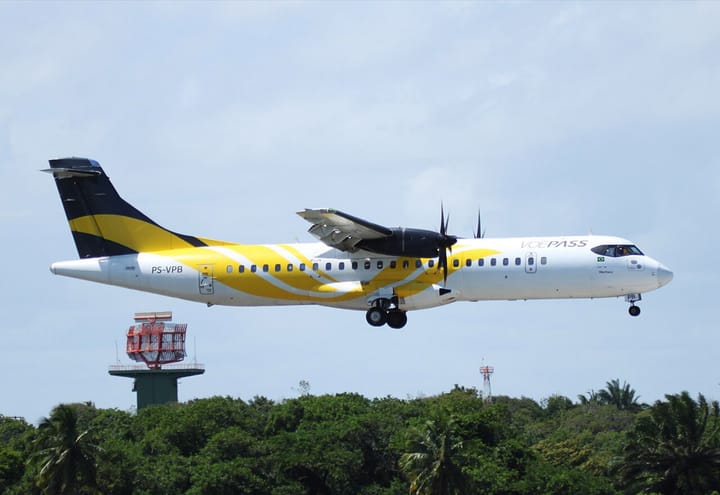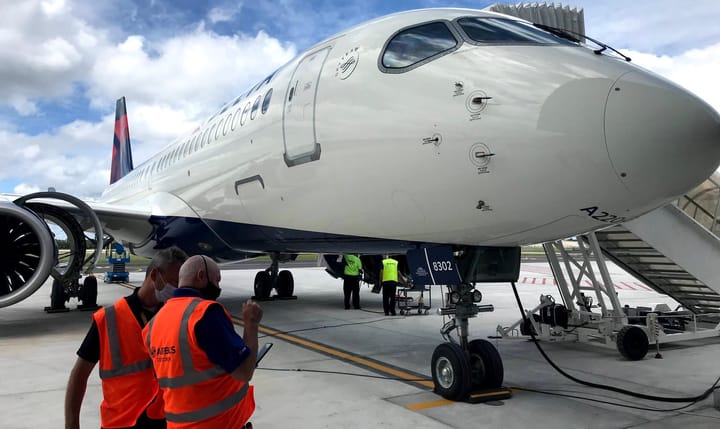FlySafair has become South Africa’s most ubiquitous domestic carrier in the post-COVID era, but the airline will face tough choices as their fleet of Boeing 737-800’s begin to age.
here can be no doubt that FlySafair has taken full advantage of the demise of airlines such as Mango and Comair’s Kulula low cost brand. FlySafair, which was still in its infancy before the COVID pandemic started, was ideally placed in the market when its competitors fell prey to the dwindling demand that came with covid-19. Once the pandemic began to ease, Safair, which owns the FlySafair brand, was able to grow rapidly as passenger demand started increasing on South Africa’s domestic routes.
With Mango and Kulula having operated fleets that comprised almost exclusively of Boeing 737-800s by 2019, with the exception of a few 737-400’s that remained as cover, Safair had no trouble picking up used examples of the type as its own fleet expanded. Today, FlySafair has twenty-eight Boeing 737-800’s on strength in addition to six 737-400’s.
Now that FlySafair finds itself in such a commanding position, the time is fast approaching when they will have to consider their fleet's future, and as the airline operates an all-Boeing fleet, the next logical step in their modernization plans would be the 737 MAX.
It's no secret that Boeing finds itself in very deep trouble. The issues with the Boeing 737 MAX have been discussed ad-nauseum in many circles. After the initial fatal Lion Air and Ethiopian accidents occurred thanks to the now infamous MCAS system on the aircraft, the recent door plug blowout of an Alaskan Airlines Boeing 737 MAX 9 triggered a cascade of embarrassing headlines for the airframer. The FAA as well as the general public had lost their patience with Boeing, and as the FAA started inspections into their manufacturing process, inspections of existing MAX 9's at multiple airlines revealed more quality issues, further compounding the pressure Boeing now faces. It seemed to be a case of ripping the bandage off as Boeing came clean on even more problems, highlighting that engine inlet heating systems that act as icing countermeasures were faulty on not only the MAX line, but on the 787 line as well. The latter issue has the potential to result in catastrophic engine failures if the de-icing system were to overheat when operated in the absence of actual icing conditions.
Boeing's main rival, Airbus, will have been wincing as they witnessed Boeing being forced to bear it all in a very bright public spotlight, and simultaneously scrambling to check and double check that they couldn't be faulted for the same poor quality and lack of accountability. Unsurprisingly, Boeing's board has now taken action, with the departure of CEO Dave Calhoun being announced in addition to other key position shakeups.
These problems at Boeing have been so widely and frequently publicized, that even the general public have cottoned on to it, which has resulted in passengers actively seeking to avoid flights that are operated by the Boeing 737 MAX. In response to the public boycott and reputational damage suffered, Boeing has even gone as far as renaming the Boeing 737 MAX line, now known as the 737-7, -8 and -9; a name change that the global news media resolutely ignored.
Returning to the issue at hand in South Africa, FlySafair now faces an uncertain future as far as its fleet modernization will be concerned in the next five to ten years. The airline is unlikely to place any orders for new aircraft and will, in all likelihood, continue to pick up used examples as they become available from lessors and larger airlines across the globe. The problem they face is what to do with the dire public perception brush the 737 MAX has now been tarred with, bearing in mind that many of their passengers will know of the MAX. It's a reputation that the aircraft is unlikely to shake.
Perspective
To be fair, the global news media have been running with the 737 MAX saga with gusto; however, in the process, many globally popular (and trusted) news outlets have started demonstrating their lack of knowledge in the field of aviation and their willingness to ride the MAX wave into oblivion by wrongly appropriating blame to the MAX for incidents that at best could be described as minor, but more importantly, incidents that happen frequently on commercial airlines of any make. The wheel separation event with an Alaskan Airlines Boeing 737MAX was one such example, and it should have served as a reminder to everyone that the industry and its passengers need to maintain perspective, which in a modern society driven by sensationalism is a difficult thing.
The truth is that by the time FlySafair has to adopt the MAX in its fleet (and it won't make commercial sense not to do it), the issues with Boeing and the 737 MAX are likely to have been resolved. FlySafair has built its entire operation around Boeing single-isle aircraft. Their pilots are all trained and current on the 737-800, and their maintenance elements, whether in-house or contracted, will be in place for years to come. Shifting an operation of this size to another brand of aircraft (such as Airbus or Embraer single-isle aircraft) would be a massive and costly undertaking.
When the day comes for Safair to adopt the MAX, they would be well advised to call the issue out to its customers and ensure that educational marketing campaigns are served to them to offer a necessary conciliation. While Boeing and the 737MAX are in very turbulent skies at the moment, it will only be a matter of time before the issues are smoothed out, and the many airlines across the globe that rely on the 737MAX will be free to operate the aircraft with peace of mind.





